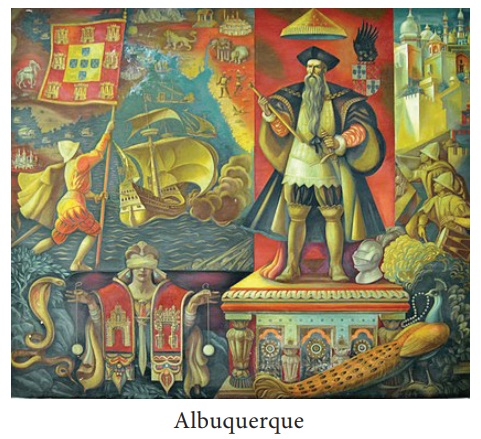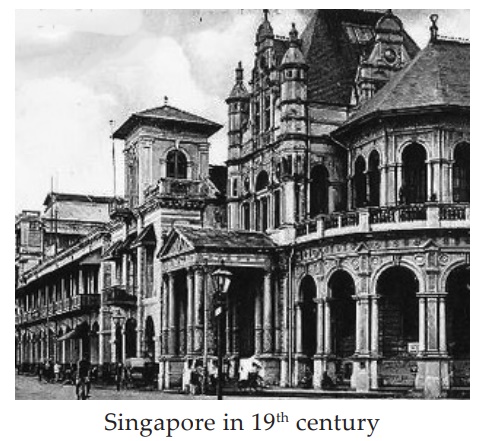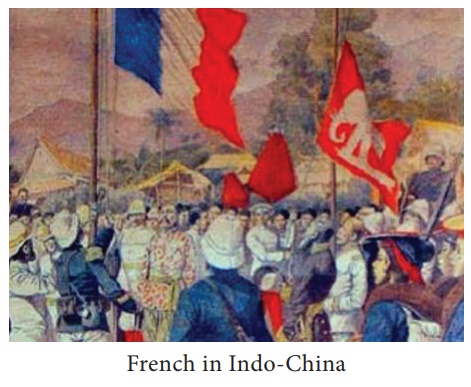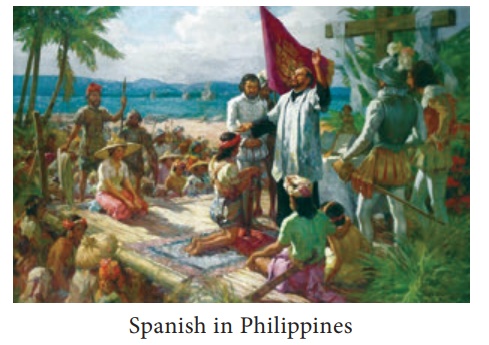History - Colonisation of Asia (South East Asia) | 9th Social Science : History: Colonialism in Asia and Africa
Chapter: 9th Social Science : History: Colonialism in Asia and Africa
Colonisation of Asia (South East Asia)
Colonisation of Asia (South
East Asia)
South East Asia
The term “South East Asia” has only been used since the Second
World War. It denotes the area that originally covered Malaya, Dutch East
Indies, Burma, Siam, French Indo-China and the Philippines. With the exception
of Siam (Thailand), which remained independent, the area was divided between
the Dutch, the British and the French.
Malayan Peninsula
When European traders crossed the Indian Ocean at the close of the
15th century, they came for the spices of south-east Asia. When the Portuguese
conquered the great international emporium of Malacca for the king of Portugal,
the empires of Srivijaya and Majapahit had split into many small states.
Albuquerque, the Portuguese soldier who conquered Goa and Malacca, and his
successors were interested in the spice trade. Towards this end they built a
chain of fortified trading stations linked by naval power. Initially they did
not interfere with the native rulers. After the arrival of the Dutch and the English
there was a challenge to the presence of Portuguese and the rivalry of these
three European powers dominated the seventeenth century.![]()

The Dutch began their conquest of the Portuguese settlements by capturing Malacca in 1641. After establishing a base at Batavia (now Djakarta) in 1619, they interfered in succession disputes among the neighbouring sultans. Gradually they extended their control over Java, expelling the British from Bantam in 1682. They had already driven them out of the Spice islands after the Massacre of Amboina (1623) and by the seizure of Macassar (1667), thereby forcing the English East India Company to turn to the China trade. The Spanish established themselves, beginning from their conquest of Manila, which expanded into a larger territory of Spanish East Indies.
Anglo-Dutch Rivalry
Penang Island had been brought to the attention of the East India
Company by Francis Light. In 1786, the settlement of George Town was founded at
the north eastern tip of Penang Island; this marked the beginning of British
expansion into the Malay Peninsula. In 1819, Stamford Raffles established Singapore
as a key trading post for Britain in their rivalry with the Dutch. However,
their rivalry cooled in 1824 when an Anglo-Dutch treaty demarcated their
respective interests in Southeast Asia. By 1826 Singapore and Malacca had been
linked with Penang to form the Strait Settlements.

Between 1874 and 1895 there was a civil war between the remaining
five Malay States. The British intervened and signed an agreement with each of
the sultans. British Residents were appointed to the courts of sultans, who had
to act in accordance with the advice given by the Residents. In 1896 four of
the states were formed into the Federated Malay States. In 1900 there were the
Straits Settlements, the four Federated Malay States and Johore. The population
was about a million, of whom, half were Malay and the remainder were Chinese.
Most of the merchants, planters and workers in the ports and big plantations
were Chinese. Economically Malaya was prosperous.
Indonesia
The Dutch had occupied Java and Sumatra (Indonesia) as early as
1640. But they conquered the other outer islands of East India only in the
second half of the nineteenth century, excepting the British possession of
North Borneo, Brunei and Sarawak. Initially the Dutch were not interested in
politics but focused on exploiting Indonesia ruthlessly. But from the beginning
of the twentieth century they adopted measures for the social and economic
advance of the people they governed. Most Indonesians were fishermen and small
peasants and worked on European sugar, tobacco, tea, coffee plantations. Heavy
investments in these plantations and other concerns, and the discovery of oil
in 1900 made Indonesia a valuable colony for the Dutch.![]()
Burma
The British conquered Burma after fighting three wars. Burma remained part of India from 1886 to 1937. Burma was administered by a Lieutenant Governor with the assistance of a nominated Legislative Council. Burma teak was shipped overseas. In addition, Burma with its rich soil became a big exporter of rice and most of south India was dependent on Burmese rice. During World War II when Burma fell to the Japanese, south India experienced acute scarcity of rice leading to a famine.
Indo-China
The French conquered Indo-China after strong resistance from the
people. Startin in 1858, they brought the Indo-Chinese Union under their
control by 1887. Indo- China consisted of Annam, Tongking, Cambodia and
Cochin-China. Laos was added six years later. Of them only Cochin-China was
directly under French control, i.e., as a French colony. The remaining four
were protectorates. Under this system, the local rulers remained, but they
governed under the instructions of French Residents. Hanoi was the capital of
the French government. Rice, rubber and wheat were the main exports. Laos
remained undeveloped.

The Philippines
Spain ruled the Philippines for over 300 years, imposing its
language, culture and religion. Consequently the population became
predominantly Roman Catholic. Nationalism developed among the Filipinos during
the latter part of the nineteenth century. There were two serious revolts in
1872 and 1896, which were crushed by the Spanish colonial government. In 1898,
however, Spain was defeated by the United States in a war over Cuba, and as a
result Philippines became an American colony.

Siam (Thailand)
Thailand was spared the experience of foreign rule, though it too
was greatly affected by the power politics of the Western powers. The
administrative reforms of the late 19th century, continuing up till around
1910, imposed a Westernised form of government on the country’s partially
independent cities called Mueang. Western powers, however, continued to
interfere in its internal and external affairs.
Related Topics